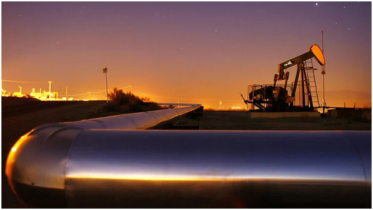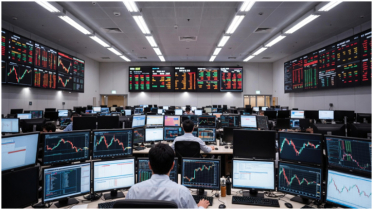Pakistan cuts growth rate to 0.8%

As major debt sustainability indicators of Pakistan deteriorated over the first half (July-December) of the current fiscal year, the government on Wednesday feared the gross financing needs to remain high, posing several liquidity risks due to high-interest rates and pressure on the external account with average inflation at 28.5% this year and staying stubborn at 21% even in next fiscal year.
“Public debt risks remain high”, said the Economic Advisory Wing of the Ministry of Finance on Wednesday in its ‘Debt Sustainability Analysis (DSA) Report“. Heatmap depicts a high risk since the debt- and GFN-to-GDP (gross financing needs to gross domestic product) ratios exceed“ the IMF’s DSA thresholds in FY23, both in baseline and shock scenarios, it said.
The stress-test analysis showed that negative shocks of the exchange rate, the most extreme scenario, would increase the public debt ratio to levels persistently above the 70% threshold of GDP until FY26. The combined macro-fiscal and standardised contingent liability shocks result in a debt-to-GDP ratio above 70%. For the first time, the government also lowered its GDP growth rate forecast to 0.8% – slightly above 0.4 to 0.6% projected by the IMF, World Bank and Asian Development Bank – against budget estimates of 5%.
The report conceded that inflation, measured as CPI, was expected to rise in FY23 to 28.5% on average due to uncertain political and economic environment, pass-through of currency depreciation, and the rise in energy prices and stay at 21% even in the next fiscal year. Over the medium term, however, MOF projected the inflation to trend down from 7.5 to 6.5% amid hopes of a stable exchange rate, better crop outlook, political stability and high base effect.
“Given the global situation, the government admits that reducing the current inflationary pressures will take some time and should not be done at the expense of recession”, it said. However, the actions implemented should steadily lower the inflation rate’s future course to 6.5% by FY26, more in accordance with steady and sustainable economic growth.
The report confirmed that total public and publicly guaranteed debt stood at Rs55.8 trillion in December 2022 – 7% higher compared to end-FY22 and attributed this rise to the increase in the interest burden due to the high-interest rate environment and the 11% depreciation of Pakistan’s Rupee against the US dollar experienced in 6MFY23.
Domestic debt accounted for 62.8% of total public debt, with the remaining being external debt. Domestic debt comprised permanent debt (medium-and long-term), floating debt (short-term), and unfunded debt (primarily made up of various instruments available under the National Savings Schemes). On the other hand, 37.2% of total public debt is external debt, which is owned by multilateral development partners, bilateral creditors, and commercial sources.
During the first half of FY23, the successful completion of the 7th and 8th review under the IMF Extended Fund Facility (EFF) led to the disbursement of $1.166bn besides a $1bn rollover by China of its SAFE deposit and $3bn of Saudi time deposit. Furthermore, the government received $3.298bn from multilateral agencies. On the other hand, the government repaid $2.722bn and $1bn on international commercial loans and international Sukuk maturity, respectively.
In FY22, the total public and publicly guaranteed debt-to-GDP ratio increased from 75.8 to 78% due to the rupee depreciation and the primary deficit, with domestic debt being the main source of financing the fiscal deficit.
“Real GDP growth is projected at 0.8% in FY23 on account of catastrophic floods, tight monetary stance, fiscal consolidation and non-conducive global economic environment”, it said, adding the growth rate was expected to rise to 5.5% in FY26 but coordinated efforts would be needed between the federal and provincial governments to ensure sustainable economic development. “In the medium term, the growth projection is set at 3.5-5.5% with price stability and fiscal and external sector sustainability”, the Economic Advisory Wing hoped.
.png)




